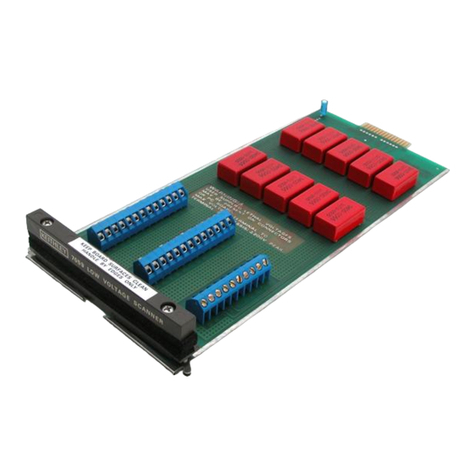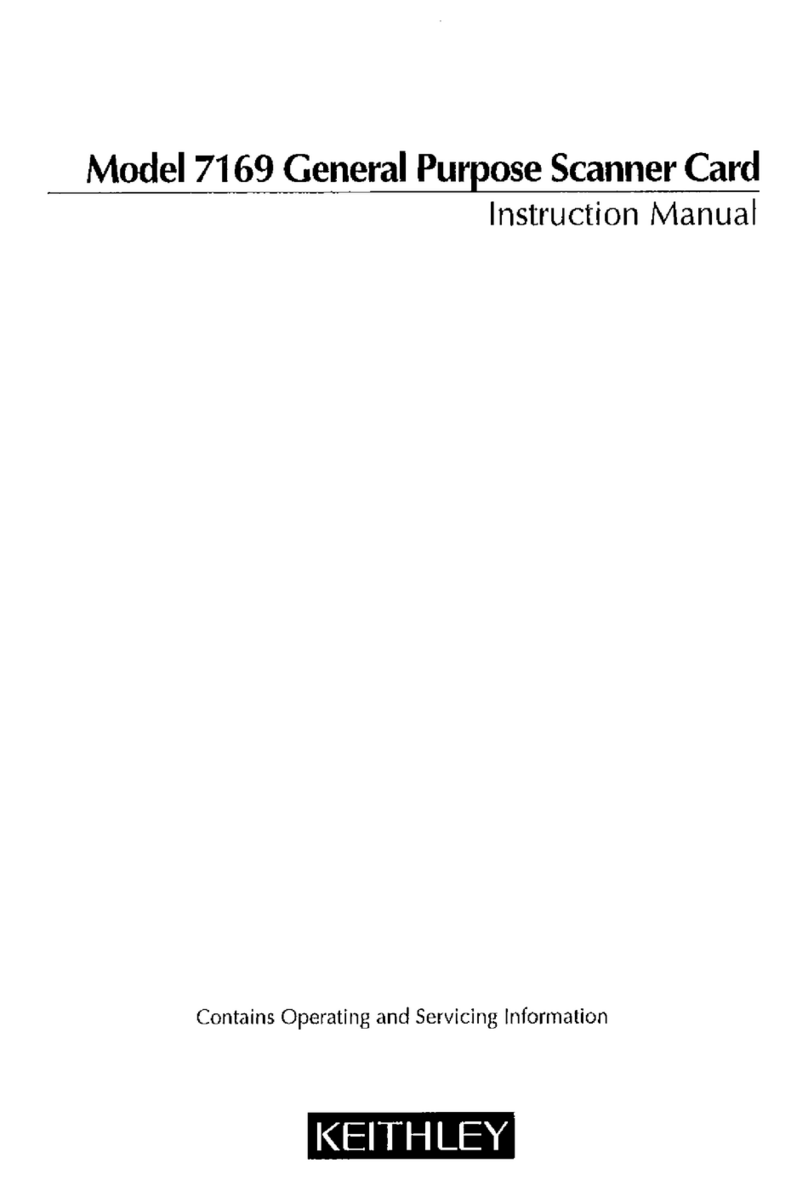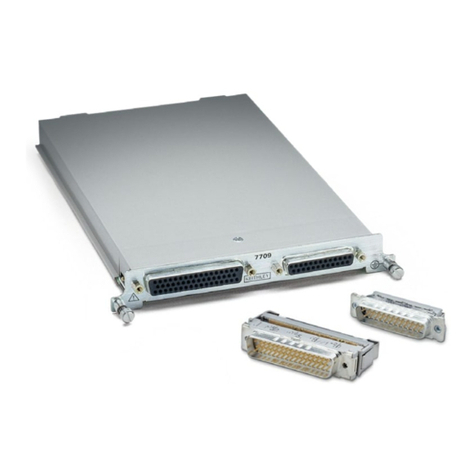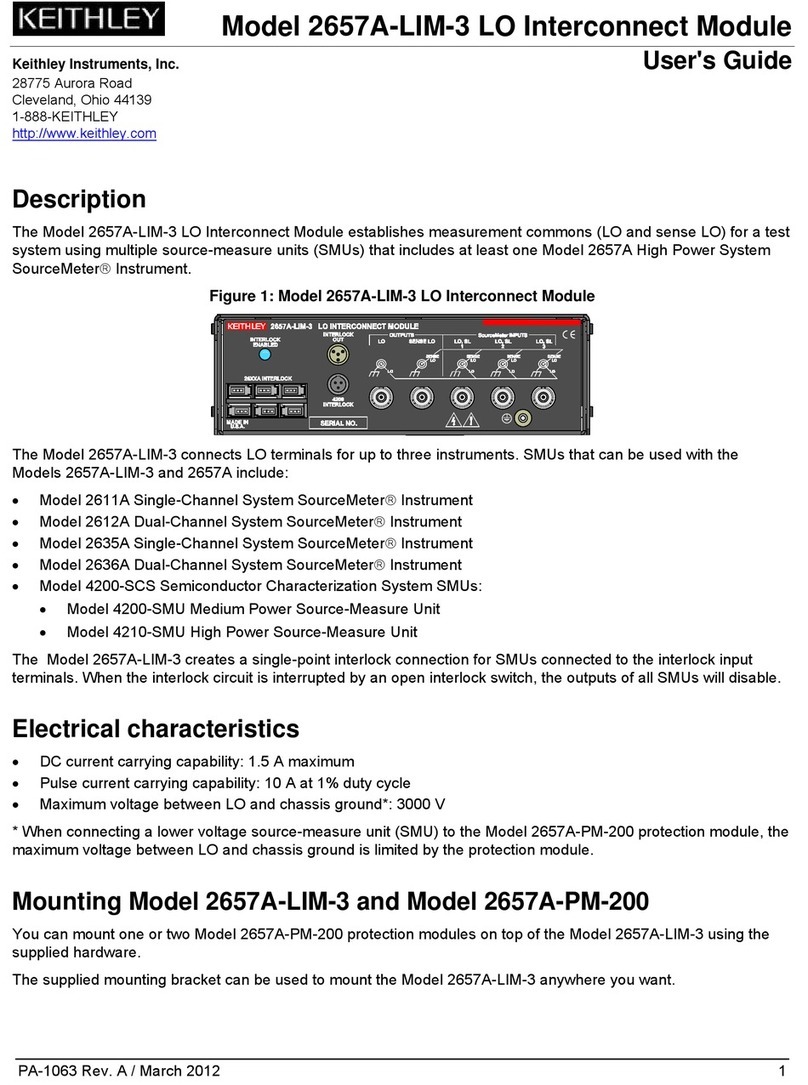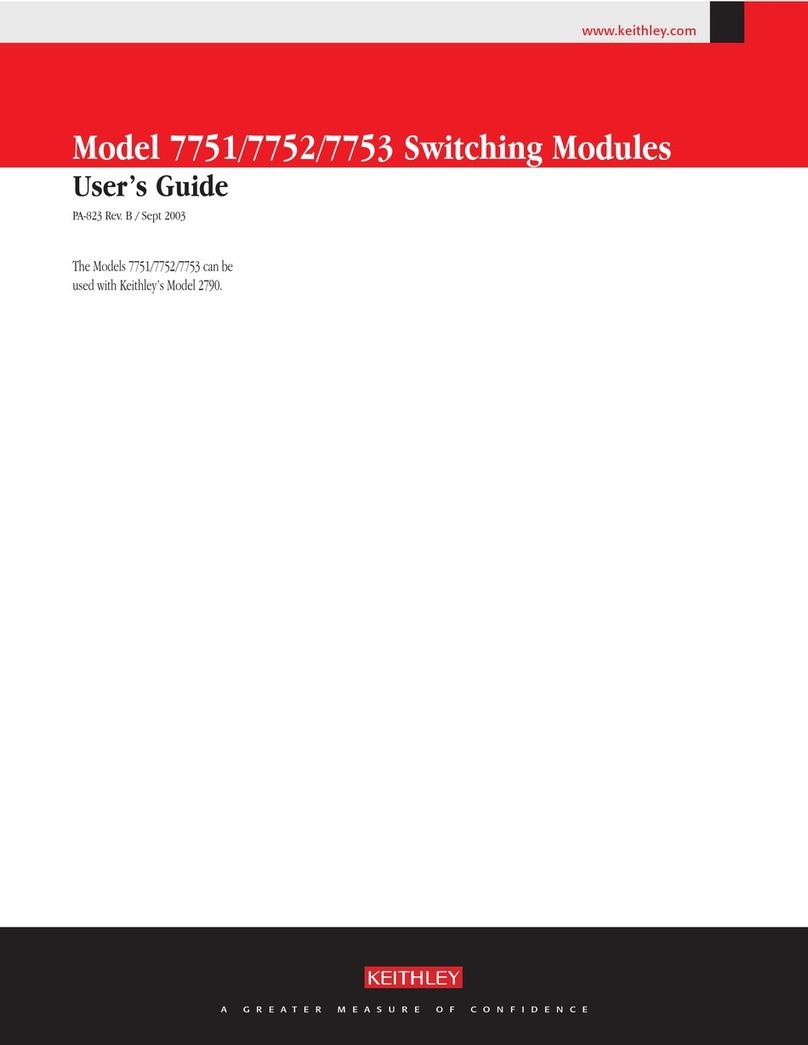
Model 2657A-PM-200 Protection Module
10 PA-1055 Rev. A / February 2012
Connections using a Model 4200-SCS SMU
Required accessories to connect one Model 4200-SMU or 4210-SMU (without the Model 4200-PA Remote
PreAmp):
•One Model 4200-TRX cable
•One or two Model 4200-MTRX cables
•Two or three high-voltage (HV) triaxial cables (Model CA-553 or CA-554)
Connection summary
Use the connection drawing below to connect a Model 4200-SMU or 4210-SMU and the GNDU (ground unit) to the
Model 2657A-PM-200. Make sure to use the IN connectors of the Model 2657A-PM-200 for connection to the
Model 4200-SCS and use the OUT connectors for connection to the device under test (DUT).
The drawing shows connections for 4-wire sensing. For 2-wire applications, the SH (sense HI) connectors of the
Model 2657A-PM-200 are not used.
When using multiple SMUs that are installed in the Model 4200-SCS, each SMU needs its own
protection module. To achieve adequate voltage protection, connect the GNDU Sense terminal to the
LO,SL (LO and sense LO) connector of each protection module using triax tees (such as the Keithley
Model 237-TRX-T) and additional triaxial cables (Model 4200-TRX).
Connecting the Model 4200-SMU or 4210-SMU to the Model 2657A-PM-200 connects the LO
terminal of the SMU to protective earth (safety ground).
When using the 2657A-PM-200, HI and SH (sense HI) should be connected together at the device
under test. A potential difference between the two circuits in excess of 100 mV may result in
compromised measurements.
Large potential differences can be created when there is significant lead resistance and current
flowing in the HI lead.To minimize lead resistance, minimize the distance between the Model 2657A-
PM-200 and the device under test.




